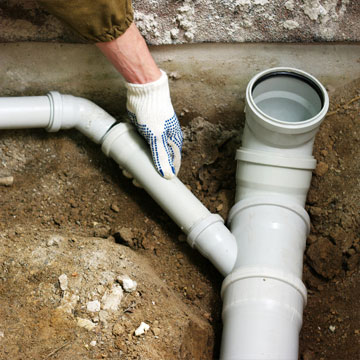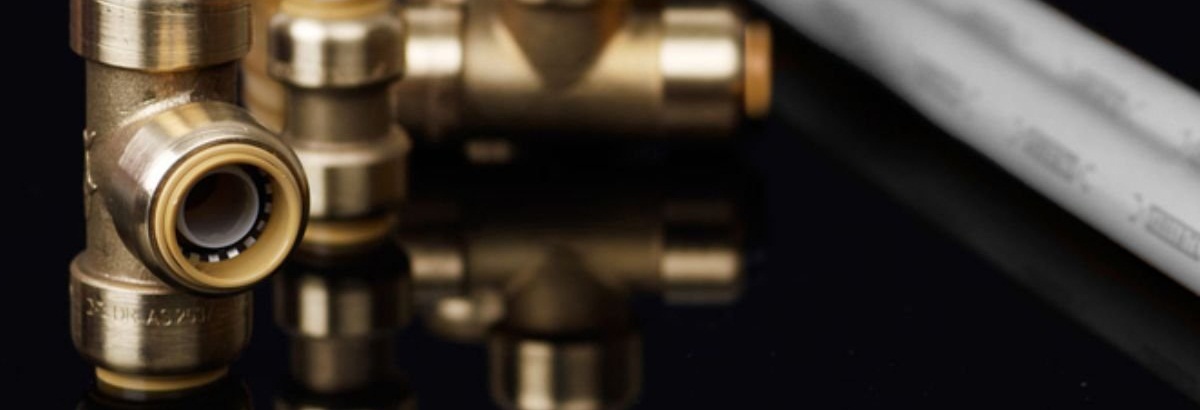Do you find yourself searching for know-how around Exploring Your Homes Plumbing Anatomy?

Recognizing just how your home's pipes system functions is crucial for every single home owner. From supplying tidy water for alcohol consumption, food preparation, and bathing to safely removing wastewater, a well-maintained plumbing system is essential for your family's health and convenience. In this thorough overview, we'll discover the elaborate network that makes up your home's pipes and deal ideas on maintenance, upgrades, and handling typical issues.
Intro
Your home's pipes system is more than simply a network of pipelines; it's a complicated system that ensures you have accessibility to tidy water and effective wastewater removal. Recognizing its components and how they interact can assist you avoid pricey fixings and make sure every little thing runs smoothly.
Basic Elements of a Plumbing System
Pipelines and Tubes
At the heart of your plumbing system are the pipes and tubes that bring water throughout your home. These can be made of various products such as copper, PVC, or PEX, each with its benefits in terms of resilience and cost-effectiveness.
Components: Sinks, Toilets, Showers, etc.
Fixtures like sinks, bathrooms, showers, and bathtubs are where water is made use of in your house. Comprehending exactly how these fixtures attach to the pipes system helps in detecting issues and intending upgrades.
Shutoffs and Shut-off Factors
Valves control the circulation of water in your plumbing system. Shut-off valves are important during emergencies or when you require to make repair work, allowing you to separate parts of the system without disrupting water circulation to the entire residence.
Water System
Main Water Line
The major water line links your home to the municipal water system or a private well. It's where water enters your home and is dispersed to various fixtures.
Water Meter and Pressure Regulatory Authority
The water meter steps your water use, while a pressure regulatory authority makes sure that water flows at a risk-free stress throughout your home's plumbing system, stopping damage to pipes and components.
Cold Water vs. Warm water Lines
Comprehending the difference between cold water lines, which supply water straight from the main, and hot water lines, which bring warmed water from the water heater, aids in troubleshooting and planning for upgrades.
Drain System
Drain Pipes Pipes and Traps
Drain pipes lug wastewater away from sinks, showers, and toilets to the drain or septic system. Traps avoid sewage system gases from entering your home and also trap debris that might create clogs.
Air flow Pipes
Air flow pipelines permit air into the drainage system, avoiding suction that might reduce drainage and trigger traps to vacant. Correct air flow is crucial for maintaining the integrity of your pipes system.
Relevance of Correct Drain
Guaranteeing proper drain stops back-ups and water damages. Consistently cleansing drains pipes and maintaining traps can prevent costly repairs and extend the life of your plumbing system.
Water Heating System
Types of Water Heaters
Water heaters can be tankless or conventional tank-style. Tankless heating units warm water as needed, while storage tanks save heated water for instant usage.
Exactly How Water Heaters Connect to the Plumbing System
Understanding how water heaters connect to both the cold water supply and hot water circulation lines aids in identifying concerns like inadequate warm water or leakages.
Maintenance Tips for Water Heaters
Frequently purging your water heater to remove sediment, examining the temperature level settings, and examining for leaks can extend its life expectancy and improve energy performance.
Usual Plumbing Issues
Leakages and Their Reasons
Leaks can take place because of aging pipes, loose fittings, or high water stress. Resolving leakages quickly prevents water damage and mold and mildew growth.
Clogs and Clogs
Blockages in drains and commodes are often brought on by purging non-flushable items or a build-up of grease and hair. Using drainpipe screens and bearing in mind what decreases your drains pipes can stop clogs.
Indicators of Plumbing Troubles to Look For
Low tide pressure, slow drains pipes, foul odors, or unusually high water costs are signs of possible plumbing troubles that ought to be resolved quickly.
Pipes Maintenance Tips
Normal Evaluations and Checks
Set up annual pipes evaluations to capture problems early. Seek indications of leakages, corrosion, or mineral accumulation in faucets and showerheads.
DIY Upkeep Tasks
Straightforward tasks like cleaning tap aerators, looking for bathroom leakages using color tablet computers, or protecting revealed pipes in chilly environments can protect against significant plumbing problems.
When to Call a Specialist Plumbing
Know when a pipes issue needs specialist know-how. Trying complex repair services without correct knowledge can cause more damage and higher repair service expenses.
Upgrading Your Pipes System
Reasons for Upgrading
Upgrading to water-efficient components or replacing old pipelines can boost water high quality, reduce water costs, and increase the value of your home.
Modern Plumbing Technologies and Their Advantages
Explore innovations like smart leak detectors, water-saving bathrooms, and energy-efficient hot water heater that can save cash and minimize ecological influence.
Cost Considerations and ROI
Determine the in advance expenses versus long-lasting financial savings when considering pipes upgrades. Numerous upgrades spend for themselves via reduced energy costs and less repairs.
Environmental Effect and Preservation
Water-Saving Components and Appliances
Installing low-flow faucets, showerheads, and bathrooms can dramatically reduce water usage without sacrificing efficiency.
Tips for Reducing Water Usage
Simple practices like repairing leaks quickly, taking shorter showers, and running full tons of laundry and dishes can conserve water and reduced your energy costs.
Eco-Friendly Pipes Options
Take into consideration lasting pipes products like bamboo for flooring, which is durable and environment-friendly, or recycled glass for kitchen counters.
Emergency situation Preparedness
Steps to Take During a Plumbing Emergency
Know where your shut-off valves lie and how to switch off the water supply in case of a ruptured pipeline or major leak.
Value of Having Emergency Contacts Handy
Maintain get in touch with information for neighborhood plumbing professionals or emergency solutions easily available for fast action during a pipes dilemma.
Do It Yourself Emergency Fixes (When Applicable).
Temporary solutions like utilizing air duct tape to spot a dripping pipe or positioning a container under a dripping tap can reduce damage until a specialist plumbing technician shows up.
Conclusion.
Understanding the makeup of your home's pipes system encourages you to preserve it efficiently, saving time and money on fixings. By complying with normal maintenance routines and remaining notified regarding modern-day plumbing modern technologies, you can guarantee your plumbing system runs efficiently for many years to find.
HOW YOUR PLUMBING SYSTEM WORKS
Which Pipes Do What?
Blue lines = fresh water supply entering the building
Red lines = hot water supply entering the building
Grey lines = pipes carrying waste away from the building and venting pipes carrying gases away from the building (through the roof)
YOUR MAIN PLUMBING SYSTEMS
There are two main plumbing systems that support your home s basic plumbing needs one that brings clean water into your home, and one that sends dirty water away from your home. Connected to the toilet, bath, shower, and other faucets in your home, these two systems keep your water flowing in the right directions.
ACCESSING FRESH WATER
Fresh and clean water is brought into your home through the main water supply line . Filtered through one pipe, this water is pressured to flow into the various fixtures in your home at any given time.
This water can be sourced from a well located on your property, a pond or river (mostly cottages), or, as in most cases, from the city s municipal water treatment centre. However, it is important to note that water that is untreated, such as the water siphoned from ponds or rivers, may not be safe to drink. Personal water supplies always need to be treated for hardness and contaminants before consumed.
MUNICIPAL WATER SUPPLIES
Improve taste and odour
Remove sediment
Eliminate hardness
Reduce chlorine
COLD WATER SUPPLY VS. HOT WATER SUPPLY
Cold water flows into your home or building through the service line, which then distributes hot or cold water to your fixtures. This line is most commonly run through a central column that runs floor to floor. Hot water runs in short and straight pipes as the longer the pipeline, the more heat that will be lost in the transfer. Having shorter pipes also allows residents to access hot water more quickly.
WASTE WATER SYSTEM
Your wastewater system is divided into two parts pipes that send wastewater away from your home and venting pipes that send sewer gas away from your home. Sewage water travels through pipes that flush the water and waste towards local sewers that are operated and managed by your city or town. Most sewer systems rely on gravity to move the wastewater to where it needs to go.
The further away from your toilet or sink, the larger wastewater pipes become. This allows for waste to be disposed of from various parts of your home or business at once without pipe blockages. The angle and flow of these pipes are also essential for keeping your waste pipes clear of build up.
https://harrisplumbing.ca/how-your-home-plumbing-system-works/

HOW YOUR PLUMBING SYSTEM WORKS
Which Pipes Do What?
YOUR MAIN PLUMBING SYSTEMS
There are two main plumbing systems that support your home s basic plumbing needs one that brings clean water into your home, and one that sends dirty water away from your home. Connected to the toilet, bath, shower, and other faucets in your home, these two systems keep your water flowing in the right directions.
ACCESSING FRESH WATER
Fresh and clean water is brought into your home through the main water supply line . Filtered through one pipe, this water is pressured to flow into the various fixtures in your home at any given time.
This water can be sourced from a well located on your property, a pond or river (mostly cottages), or, as in most cases, from the city s municipal water treatment centre. However, it is important to note that water that is untreated, such as the water siphoned from ponds or rivers, may not be safe to drink. Personal water supplies always need to be treated for hardness and contaminants before consumed.
MUNICIPAL WATER SUPPLIES
COLD WATER SUPPLY VS. HOT WATER SUPPLY
Cold water flows into your home or building through the service line, which then distributes hot or cold water to your fixtures. This line is most commonly run through a central column that runs floor to floor. Hot water runs in short and straight pipes as the longer the pipeline, the more heat that will be lost in the transfer. Having shorter pipes also allows residents to access hot water more quickly.
WASTE WATER SYSTEM
Your wastewater system is divided into two parts pipes that send wastewater away from your home and venting pipes that send sewer gas away from your home. Sewage water travels through pipes that flush the water and waste towards local sewers that are operated and managed by your city or town. Most sewer systems rely on gravity to move the wastewater to where it needs to go.
The further away from your toilet or sink, the larger wastewater pipes become. This allows for waste to be disposed of from various parts of your home or business at once without pipe blockages. The angle and flow of these pipes are also essential for keeping your waste pipes clear of build up.
https://harrisplumbing.ca/how-your-home-plumbing-system-works/
Hopefully you enjoyed our piece on . Many thanks for taking a few minutes to read our post. Feel free to take the time to distribute this page if you enjoyed reading it. Thanks for your time. Please come by our blog back soon.
Visit Our Website